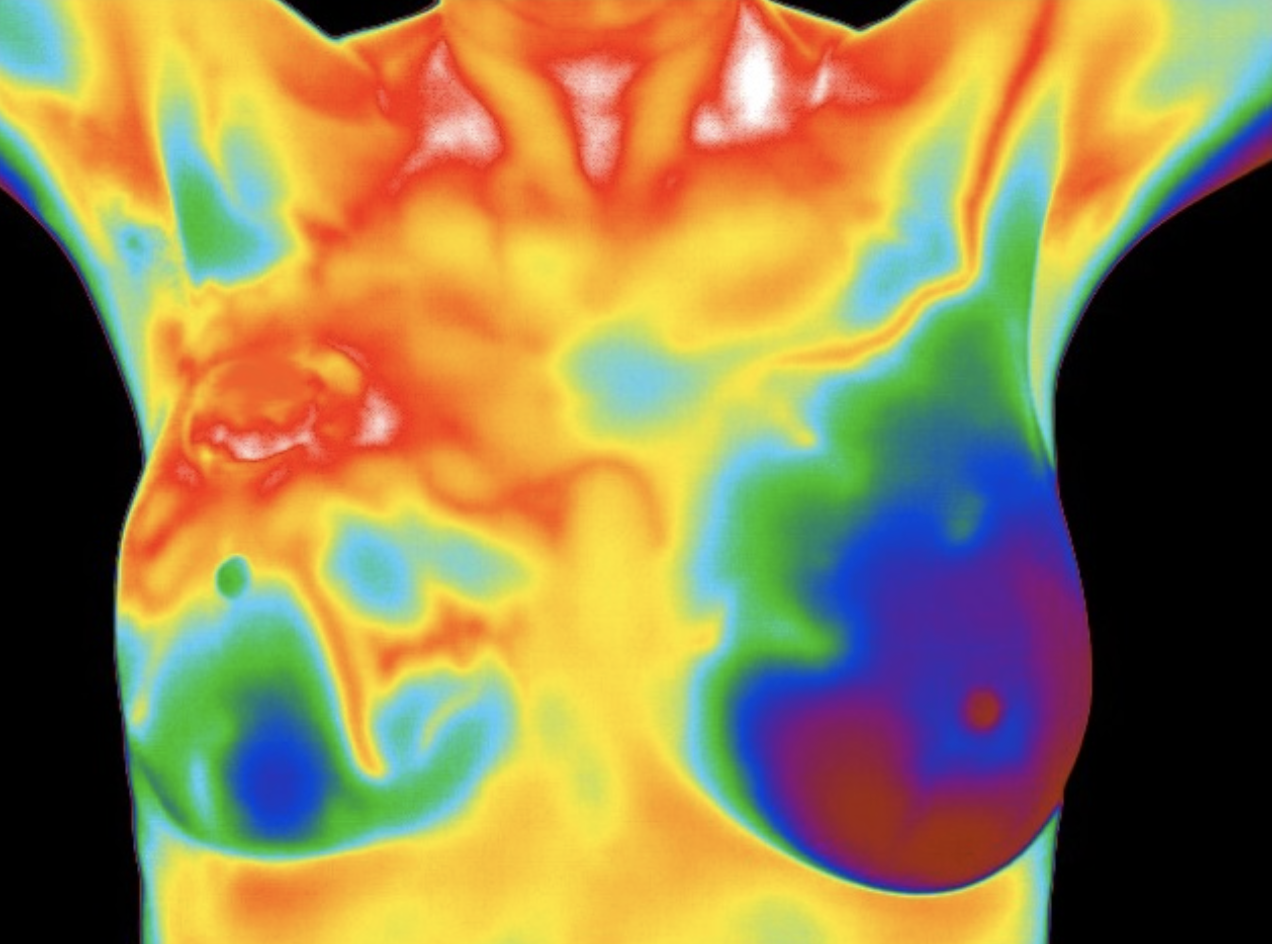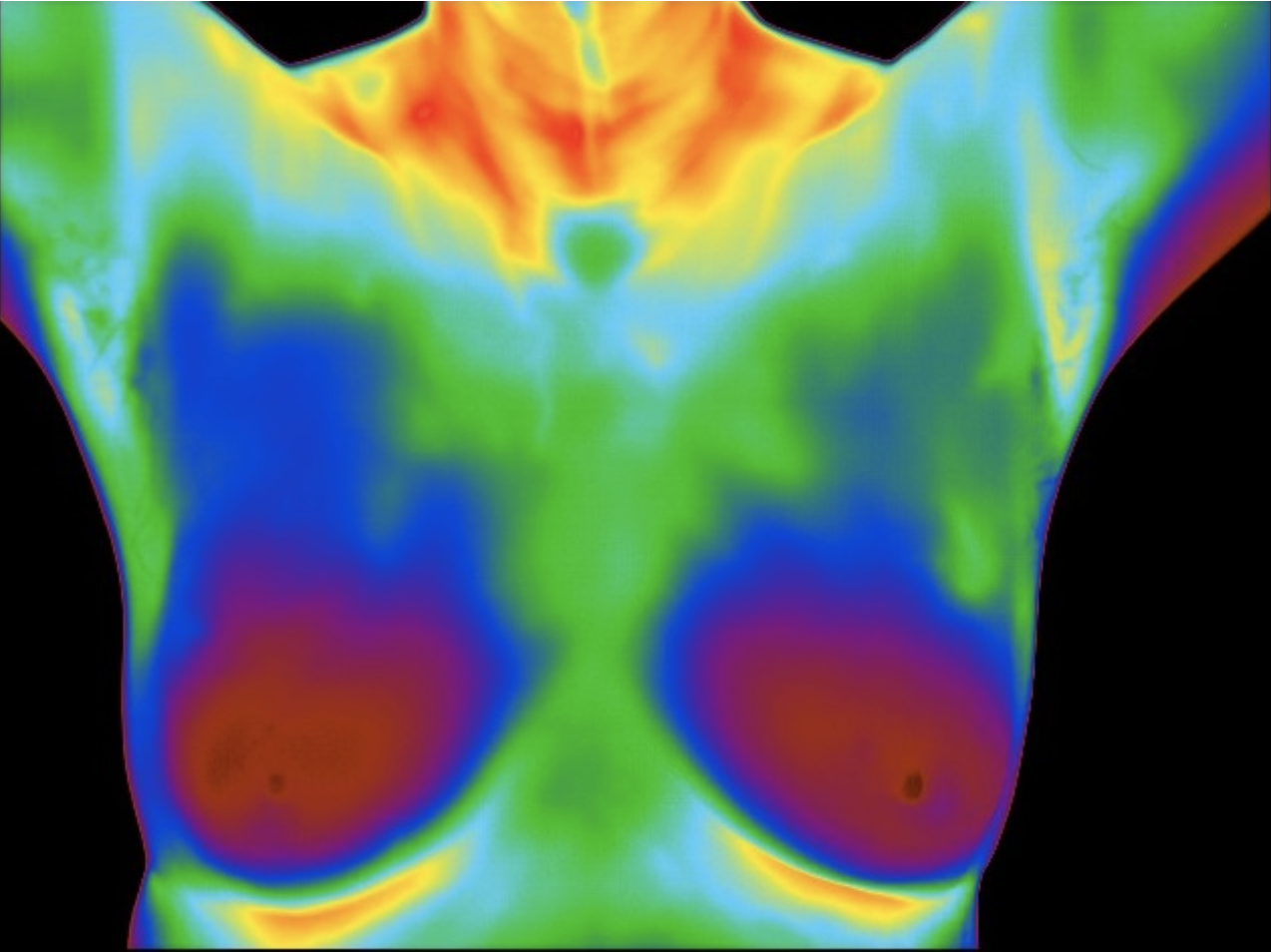Our Service
Thermography is a well-tested breast cancer screening technology that can detect breast cancer at the very earliest stages.
Medical Infrared Imaging (MIR) is used to detect increased areas of vascular activity. When a specialized camera’s detectors sense the incoming infrared heat, an electrical signal is produced that generates a visible image display. Increased vascular activity and heat can be seen in the image.
Here are some pretty cool facts about breast thermography:
Assesses breast cancer risk, allowing patients to take preventative measures early on
Well-established and FDA-approved screening tool
90% accurate (comparable to that of mammography and breast ultrasound
Safe, non-invasive technology
Can detect irregularities in fibrocystic (thick, dense) breast tissue
Thermography was approved as an adjunctive imaging procedure by the FDA in 1982 (Federal Register, Vol 47, No. 20, pp 4419-4420, January 29, 1982). The FDA approved thermography as follows: “Telethermographic systems intended for adjunctive diagnostic screening for the detection of breast cancer or other uses” (Code of Federal Regulations – Title 21, Section 884.2980 Telethermographic Systems).


Breast images TH1 and TH5 – The TH5 image on the left shows large hot (red) blood vessels over the breast (Thermobiological level 5 – very abnormal). The patient was sent back to her doctor for immediate follow-up imaging. Upon biopsy the left breast was diagnosed with cancer.
The TH1 image on the right has a very normal cool heat pattern.
FAQS
No it’s definitely not a replacement for other screening options. Thermography assesses the physiology of each individual while mammography & breast ultrasound both look at structure. They just evaluate the breast tissue very differently and compliment each other well for this reason, in order to give a well-rounded assessment of the breast tissue. Thermography, mammography, and breast ultrasound are all approx 90% effective so including more than one imaging procedure to your breast cancer screening regimen is helpful and potentially life-saving.
These technologies are different and they look at the body completely differently. Thermography assesses person-specific breast physiology & risk while mammography & ultrasound look solely at structure.
That depends on each woman’s history, risk factors, and age. Women in their 20’s sound get a thermography every three years and then yearly after the age of 30.
Thermography is non-invasive and 100% safe with zero side effects.
Unfortunately, most insurance companies will not cover thermograms. However, alternative health insurance options (medi-share, HSA, etc) will cover it. We can provide you with a detailed invoice to submit to insurance for reimbursement.
Estrogen dominance is when there is increased estrogen levels relative to progesterone levels in the body. Many conditions are thought to be associated with or exacerbated by estrogen dominance such as: breast and uterine cancers, fibroids, endometriosis, and polycystic ovarian syndrome (PCOS).
We’d love to hear from you!
HEAR FROM OUR WONDERFUL CLIENTS
WHERE WOMEN THRIVE
